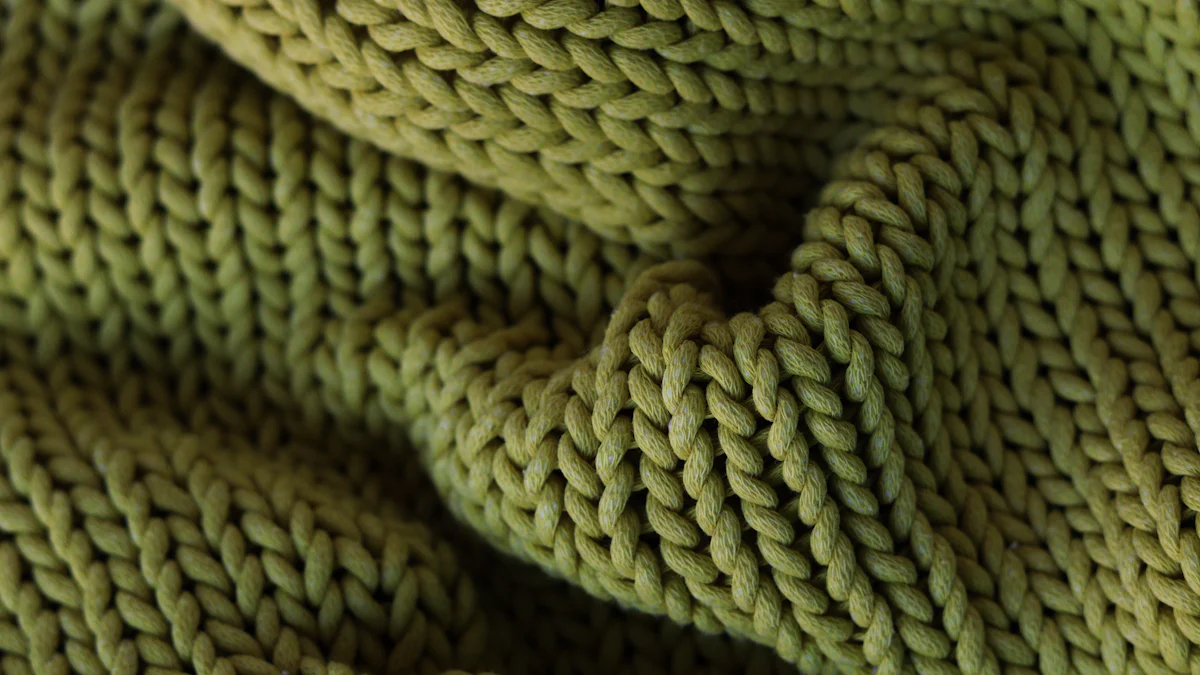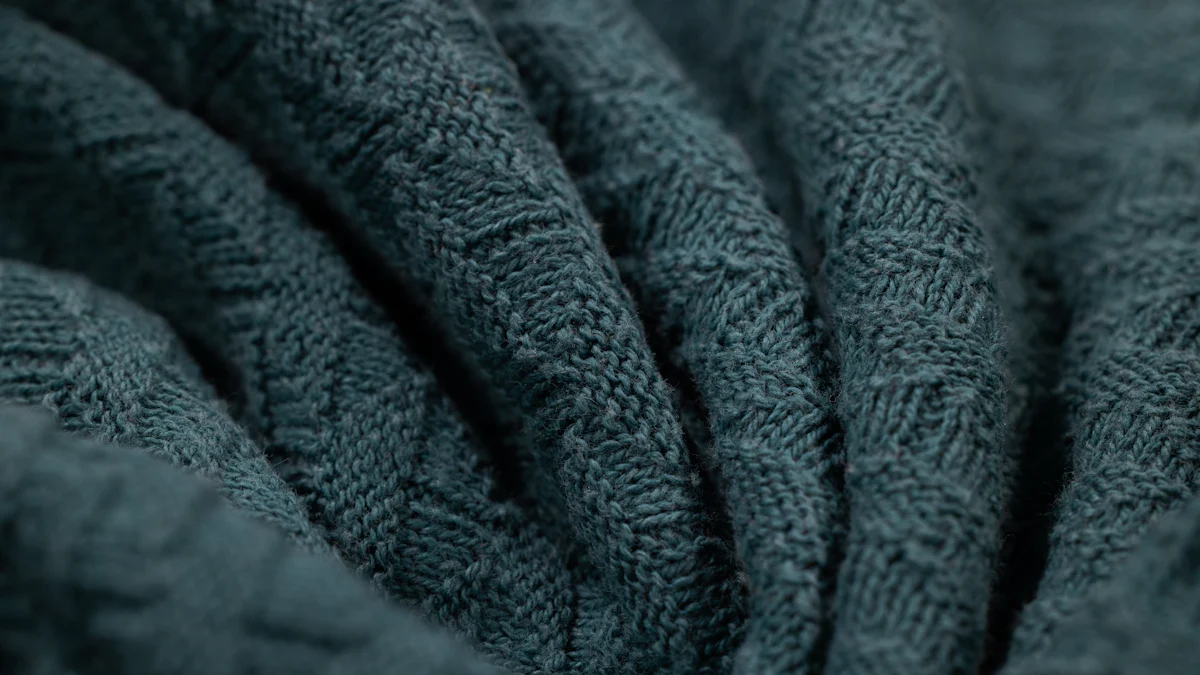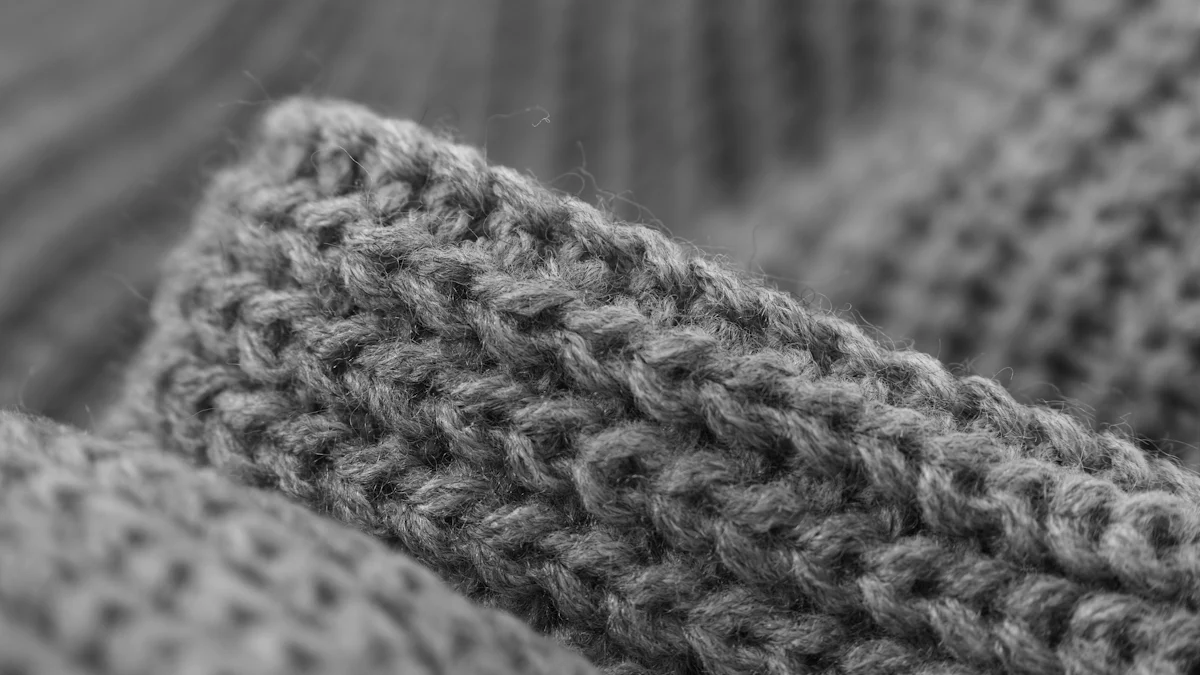
Have you ever wondered why single jersey fabric is so popular? I love it because it’s lightweight, stretchy, and super comfy. It’s perfect for warm weather since it’s breathable and wicks moisture well. Plus, it works for everything—sportswear, casual clothes, or even home textiles. Check out more about it here.
Key Takeaways
- Single jersey fabric is light and airy, great for hot days and comfy clothes.
- It stretches easily and keeps its shape, perfect for sportswear and daily outfits.
- Wash and dry it gently to keep it soft and avoid harm.
What is Single Jersey Fabric?

Definition and Key Features
Single jersey fabric is one of my favorite materials because it’s so soft and stretchy. It’s lightweight and breathable, which makes it perfect for casual wear, especially in warm weather. This fabric is usually made from natural fibers like cotton, giving it a smooth texture that feels great on the skin. Unlike thicker knit fabrics, single jersey fabric has a thinner structure, making it ideal for t-shirts and activewear. Its versatility is what makes it stand out. Whether you’re lounging at home or heading out for a quick errand, this fabric has got you covered.
How Single Jersey Fabric is Made
I find the process of making single jersey fabric fascinating. It’s created using a single set of needles on a knitting machine. This technique gives the fabric its unique texture, with one side smooth and the other side looped. The smooth side is what you usually see on the outside of garments, while the looped side stays inside. This simple knitting method is what makes the fabric so stretchy and comfortable. In comparison, other fabrics like interlock are made with two sets of needles, which results in a thicker and more durable material.
Single Jersey Fabric vs. Other Knit Fabrics
When comparing single jersey fabric to other knit fabrics, the differences are pretty clear. Single jersey is thinner and lighter, which makes it great for breathable clothing. It also stretches more because of its single-needle construction. On the other hand, double jersey fabric is thicker and heavier, making it better for colder weather. Interlock fabric, another type of knit, has a firmer structure and is less stretchy. While single jersey fabric is perfect for casual and everyday wear, these other fabrics are better suited for specific purposes like winter clothing or structured garments.
Advantages of Single Jersey Fabric
Lightweight and Comfortable
I love how lightweight single jersey fabric feels. It’s like wearing a second skin! This fabric is perfect for casual wear because it doesn’t weigh you down. Whether I’m lounging at home or running errands, I always feel comfortable. Its soft texture makes it ideal for close-to-skin garments like t-shirts and underwear. Plus, it drapes beautifully, giving clothes a relaxed and flattering fit.
Stretchy and Retains Shape
One of my favorite things about single jersey fabric is its stretchiness. It moves with me, whether I’m stretching during yoga or just relaxing on the couch. What’s even better? It bounces back to its original shape after being stretched. This makes it a great choice for activewear and everyday clothing. I never have to worry about it looking baggy or worn out after a few uses.
Breathable and Cool for Warm Weather
When the weather gets hot, single jersey fabric is my go-to. Its breathable nature keeps me cool by allowing air to circulate. The fabric’s porosity helps sweat evaporate quickly, which is a lifesaver during summer. I’ve noticed that it doesn’t trap heat like some other materials. This makes it perfect for t-shirts, tank tops, and even lightweight dresses.
Versatile for Everyday Use
I can’t get over how versatile single jersey fabric is. It works for so many types of clothing—t-shirts, leggings, dresses, and even sportswear. I’ve also seen it used in home textiles like bedsheets and pillowcases. Its adaptability comes from the fact that it can be made from different fibers, giving it unique properties for various uses. Whether I need something casual or sporty, this fabric has me covered.
Affordable and Easy to Source
Another reason I love single jersey fabric is its affordability. It’s budget-friendly, which means I can stock up on my favorite pieces without breaking the bank. It’s also widely available, so I never have trouble finding it in stores or online. For anyone looking for a practical yet cost-effective fabric, this one is a no-brainer.
Disadvantages of Single Jersey Fabric
Prone to Pilling and Curling Edges
One thing I’ve noticed about single jersey fabric is how easily it pills. Those tiny, annoying fuzz balls can show up after just a few washes, especially if the fabric rubs against other surfaces. The edges also tend to curl, which can make sewing or hemming a bit tricky. This happens because of the way the fabric is knitted. While it’s great for stretchiness, it also means the edges don’t stay flat. If you’re working with this fabric, you’ll need to handle it carefully to avoid frustration.
Limited Durability and Longevity
I’ve found that single jersey fabric doesn’t last as long as some other knit fabrics. Its lightweight structure makes it prone to wear and tear. For example, interlock fabric, which has a double-knit construction, is much stronger and holds up better over time. Single jersey is perfect for casual, everyday wear, but it’s not the best choice for clothing that needs to endure heavy use.
May Sag or Lose Shape Over Time
Another downside is that single jersey fabric can sag or lose its shape after repeated use. While it’s stretchy and comfortable, it doesn’t always bounce back as well as I’d like. Over time, you might notice your favorite t-shirt looking a little baggy or stretched out, especially if it’s been washed frequently.
Retains Moisture and Dries Slowly
Although single jersey fabric is breathable, it does tend to hold onto moisture longer than I’d prefer. This can be a problem if you’re sweating or caught in the rain. Here’s what I’ve learned about its moisture properties:
- It allows sweat to evaporate, which helps with comfort during warm weather.
- However, it doesn’t dry as quickly as some synthetic fabrics, so it might feel damp for a while.
Requires Gentle Care and Maintenance
Taking care of single jersey fabric can be a bit of a hassle. I’ve made mistakes like washing it on a rough cycle or using high heat, and it didn’t end well. Common issues include broken stitches or uneven texture, especially if the fabric isn’t handled gently. To keep it looking good, I always wash it on a delicate cycle and avoid harsh detergents. It’s worth the extra effort, but it’s something to keep in mind if you’re looking for low-maintenance clothing.
Practical Applications and Care Tips

Common Uses in Clothing and Accessories
I’ve seen single jersey fabric used in so many ways, and it’s no surprise why. It’s lightweight, stretchy, and super comfy, making it a favorite for casual and activewear. Some of the most common clothing items made from this fabric include:
- T-shirts
- Leggings
- Lightweight summer dresses
- Casual wear like skirts and tops
It’s also a go-to for athletic apparel like yoga pants and training clothes because it allows for easy movement. I’ve even noticed it being used in home textiles like pillowcases and bed sheets. Its versatility makes it a staple in the fashion and home industries. Whether you’re looking for breathable summer outfits or cozy loungewear, this fabric has you covered.
Washing and Drying Guidelines
Taking care of single jersey fabric doesn’t have to be complicated. I’ve learned that following a few simple steps can keep it looking fresh for longer. Here’s a quick guide:
| Care Instruction | Recommendation |
|---|---|
| Washing Temperature | Cold water |
| Detergent Type | Gentle detergent |
| Bleach | Avoid bleach or harsh chemicals |
| Drying Method | Air dry or low heat setting in dryer |
| Ironing Temperature | Low temperature |
I always wash my single jersey clothes in cold water with a mild detergent. Harsh chemicals like bleach can weaken the fibers, so I avoid them. For drying, air drying works best, but if I’m in a hurry, I use a low heat setting in the dryer. These steps help maintain the fabric’s softness and shape.
Tips to Extend the Fabric’s Lifespan
If you want your single jersey fabric items to last, here are some tips I swear by:
- Choose high-quality fabric. Look for thicker material and longer yarns for better durability.
- Always check the care label. It gives specific instructions for washing and drying.
- Wash in cold water. Even if the label allows warm water, cold water is gentler on the fibers.
- Don’t overstuff the washing machine. Overloading can stretch and damage the fabric.
By following these tips, I’ve managed to keep my favorite t-shirts and leggings in great condition for years. A little extra care goes a long way in preserving the quality of this versatile fabric.
Single jersey fabric is my go-to for casual wear. It’s lightweight, breathable, and super comfy. Its smooth face and textured back make it versatile for many uses. Choosing the right fiber—like cotton for softness or polyester for durability—can make all the difference. Just keep in mind its drawbacks, like pilling and limited durability. By weighing these factors, you can decide if it’s the right fit for your needs.
FAQ
What makes single jersey fabric different from double jersey fabric?
Single jersey fabric is thinner and more breathable. Double jersey fabric feels thicker and warmer, making it better for colder weather or structured garments.
Can I sew single jersey fabric at home?
Yes! Use a ballpoint needle and a stretch stitch on your sewing machine. These tools prevent skipped stitches and keep the fabric from stretching out.
How do I stop single jersey fabric from curling at the edges?
I’ve found that ironing the edges or using fabric stabilizers works wonders. You can also sew a hem or use a serger to keep them flat.
Post time: Jan-26-2025
